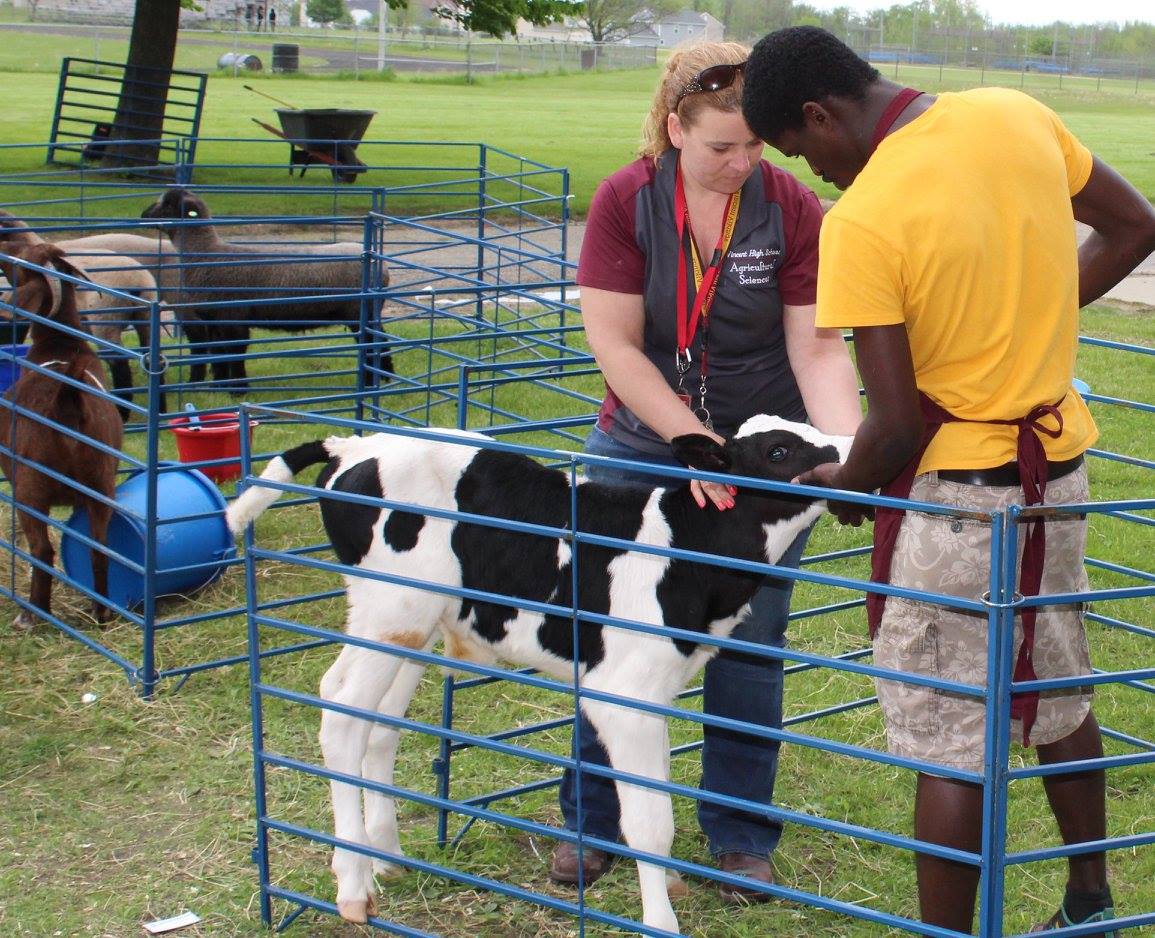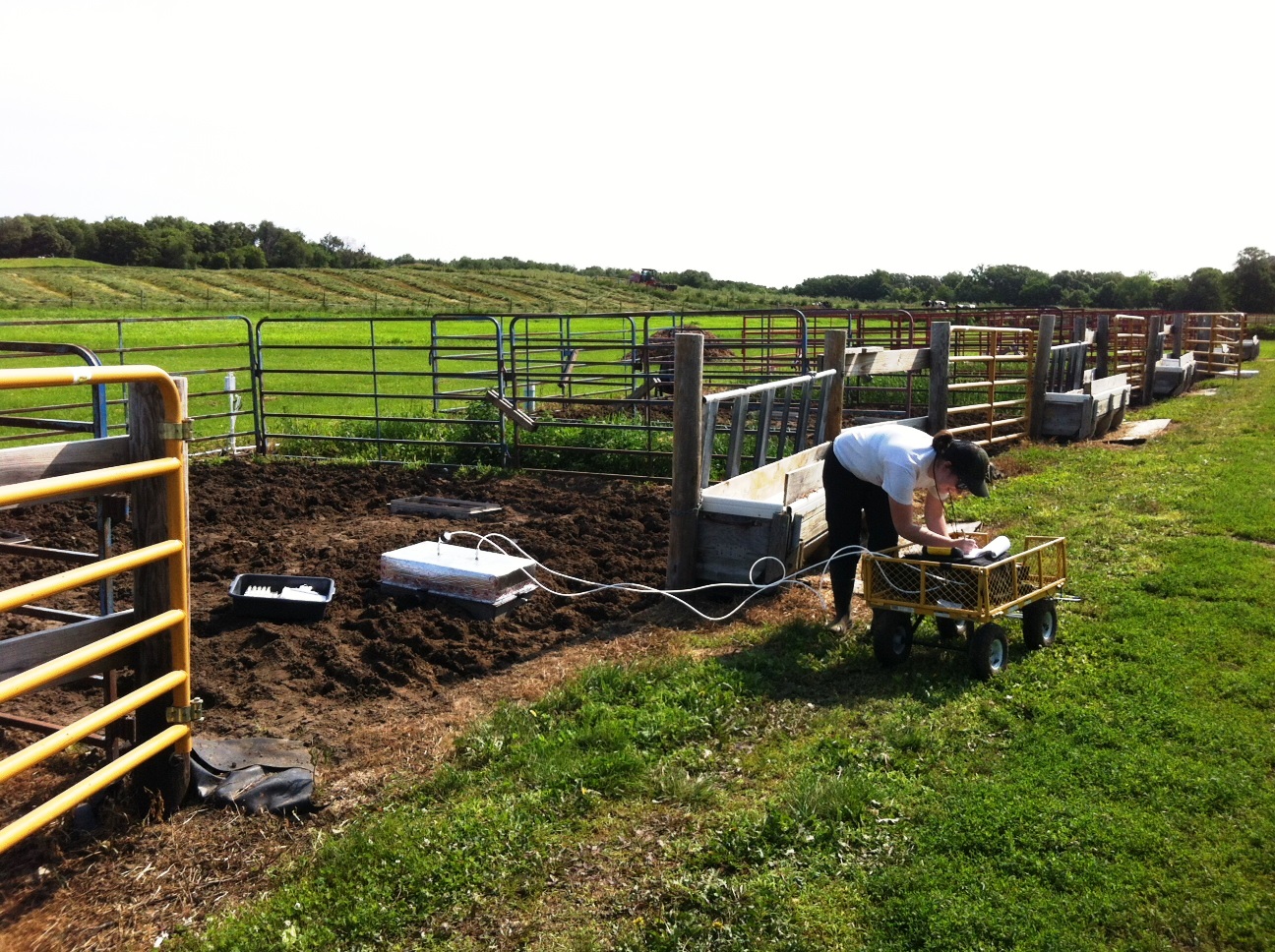June 18, 2018 - A series of fact sheets has been developed by the University of Wisconsin-Madison on how dairy production systems affect climate change and what mitigation measures can be used to reduce greenhouse gases.
Eleven have been published and are now available on our website. They are available to you to print for free.
May 31, 2017 M  ilwaukee - Pigs, plants and ponies were
only some of the things students showed off at Vincent High School’s
Agricultural Showcase in Milwaukee in late-May. The event was the first of its
kind since the school began its transformation to become the Harold S. Vincent High
School of Agricultural Sciences in August 2016.
Each freshman is required to take a
year-long Introduction to Agricultural Sciences class and on Showcase day, they
filed into the school’s auditorium to hear the afternoon’s kick-off speaker. The state’s top agricultural administrator,
Ben Brancel, Secretary of the Department of Agriculture, Trade and Consumer
Protection, was there to encourage the freshmen to be part of the state’s
agricultural future, either by continuing their education in college or by
working directly with the food and beverage industry. Read the entire story here.
May 23, 2017 - Our annual meeting was held this year in Raleigh, North Carolina in conjunction with the Waste to Worth conference. Over 20 people attended, and eight oral presentation and four poster presentations were made. The booklet from the meeting is now available on-line, as well as new fact sheets and a link to the project Virtual Farm website which is currently under development.
December 22, 2016 - We have submitted to the USDA our continuation application for Year 5. Click here to read the plan of work for our final year of the grant. In addition, we submitted the annual Report for work done in Year 4. It is also available here.
June 23, 2016 - Mark Powell and Peter Vadas, PIs from the USDA ARS Dairy Forage Research Center, have recently published a paper entitled, Gas emissions from dairy barnyards, based on data collected at the Prairie du Sac facility The paper examines the impacts of surface materials and timing of cattle coralling on greenhouse gases. The paper was published in Animal Production Science, 2016, 56, 355-361.
June 14, 2016 -
Milwaukee Public Schools is pleased to announce that MPS Superintendent Dr. Darienne B. Driver has officially approved a comprehensive proactive proposal supporting the transformation of Vincent High School into Vincent High School of Agricultural Sciences. This transformation relates to the district’s Eight Big Ideas initiative – “Rethinking High Schools.”
UW-Madison will continue to serve as the backbone organization that facilitates the Vincent Ag Project. The development and implementation of the agricultural project is one of the major objectives under the $10 million Dairy Coordinated Agricultural Project. Gail Kraus, CAP Outreach Specialist based at Vincent High School, is funded through the CAP grant.
The All-Hands Annual Meeting for Year 4 of the project took place on the University of Wisconsin- Madison campus on March 1-2, 2016, with about 50 attendees. The meeting focused on all five objectives of the project. Fourteen PIs, post-docs and graduate students also attended a pre-conference workshop on the computer model, IFSM. Others attended a field trip to the UW Dairy Cattle Center to see the Green Feed machine in operation. This machine
measures methane from the cow’s mouth as she inserts her head into a small
metal box while eating. Finally, we visited the USDA Dairy Forage Research
Center facility in Prairie du Sac to see the newly operational greenhouse gas
chambers, a sophisticated facility that measures all gases from the cow. Each
cow in an experiment is housed in a single tie stall chamber while fed a
special diet, but is milked along with the other cows at other times of the
day. Madison campus on March 1-2, 2016, with about 50 attendees. The meeting focused on all five objectives of the project. Fourteen PIs, post-docs and graduate students also attended a pre-conference workshop on the computer model, IFSM. Others attended a field trip to the UW Dairy Cattle Center to see the Green Feed machine in operation. This machine
measures methane from the cow’s mouth as she inserts her head into a small
metal box while eating. Finally, we visited the USDA Dairy Forage Research
Center facility in Prairie du Sac to see the newly operational greenhouse gas
chambers, a sophisticated facility that measures all gases from the cow. Each
cow in an experiment is housed in a single tie stall chamber while fed a
special diet, but is milked along with the other cows at other times of the
day.
The conference booklet, which includes the meeting agenda, a personnel directory, the annual report for the third year of the project, and the project proposal for the fourth year, is now available.
Learn more about research being conducted on the Sustainiable Dairy Project with our new fact sheet. Data are being collected in Wisconsin, New York and Pennsylvania to better understand:
- Feed rations and their effects on methane and milk production;
- Manure storage and alternative processing techniques such as anaerobic
digestion and their effects on GHG emissions;
- How changes in diet and manure processing affect the nutrient
availability of manure;
- Manure application and rates and their effects on GHG emissions and
crop production;
- Water balances and budgets across grain and dairy cropping systems; and
- Cover crops and their influence on carbon and nitrogen cycling.

 Four undergraduate students earned the opportunity to participate in the Sustainable Dairy’s 2015
Research Mentorship Program to work with principal investigators,
post-doctoral research associates and graduate students at The
Pennsylvania State University, Cornell University, North Carolina Ag and
Tech State University and University
of Wisconsin-Madison. The four undergraduate students involved in these
mentorships come from diverse backgrounds, but they all share a passion
for sustainable dairy production systems. Read all about these students
and their projects
▶ HERE Four undergraduate students earned the opportunity to participate in the Sustainable Dairy’s 2015
Research Mentorship Program to work with principal investigators,
post-doctoral research associates and graduate students at The
Pennsylvania State University, Cornell University, North Carolina Ag and
Tech State University and University
of Wisconsin-Madison. The four undergraduate students involved in these
mentorships come from diverse backgrounds, but they all share a passion
for sustainable dairy production systems. Read all about these students
and their projects
▶ HERE

Greenhouse gas emissions can be measured using different method s, two of which are being used in the Sustainable Dairy project. Last week, post-doc Sarah Collier and graduate student Claire Campbell collected data to assess how similar GHG sampling is between gas chromatography using the vial and syringe sampling systems and Fourier Transform Infrared Spectroscopy sampling. Both methods are currently being used in Wisconsin under the grant. Sarah and Claire have sampled across five agricultural systems to determine if these methods result in the same emission fluxes and concentrations. s, two of which are being used in the Sustainable Dairy project. Last week, post-doc Sarah Collier and graduate student Claire Campbell collected data to assess how similar GHG sampling is between gas chromatography using the vial and syringe sampling systems and Fourier Transform Infrared Spectroscopy sampling. Both methods are currently being used in Wisconsin under the grant. Sarah and Claire have sampled across five agricultural systems to determine if these methods result in the same emission fluxes and concentrations.
Only limited analysis has been undertaken and published that compares data generated through these differing approaches. This is of particular relevance to the Sustainable Dairy project where large databases – such as those used in crop production and climate modeling – will be populated by multiple data streams possibly derived through varying techniques. Sarah and Claire will present their results at the Agronomic Society of America's Annual meeting November 15-18 in Minneapolis, MN. Read their abstract, Improving Accuracy and Precision of Soil Carbon and Greenhouse Gas Emission Measurements and Quantification, here.
▶ HERE
|
|